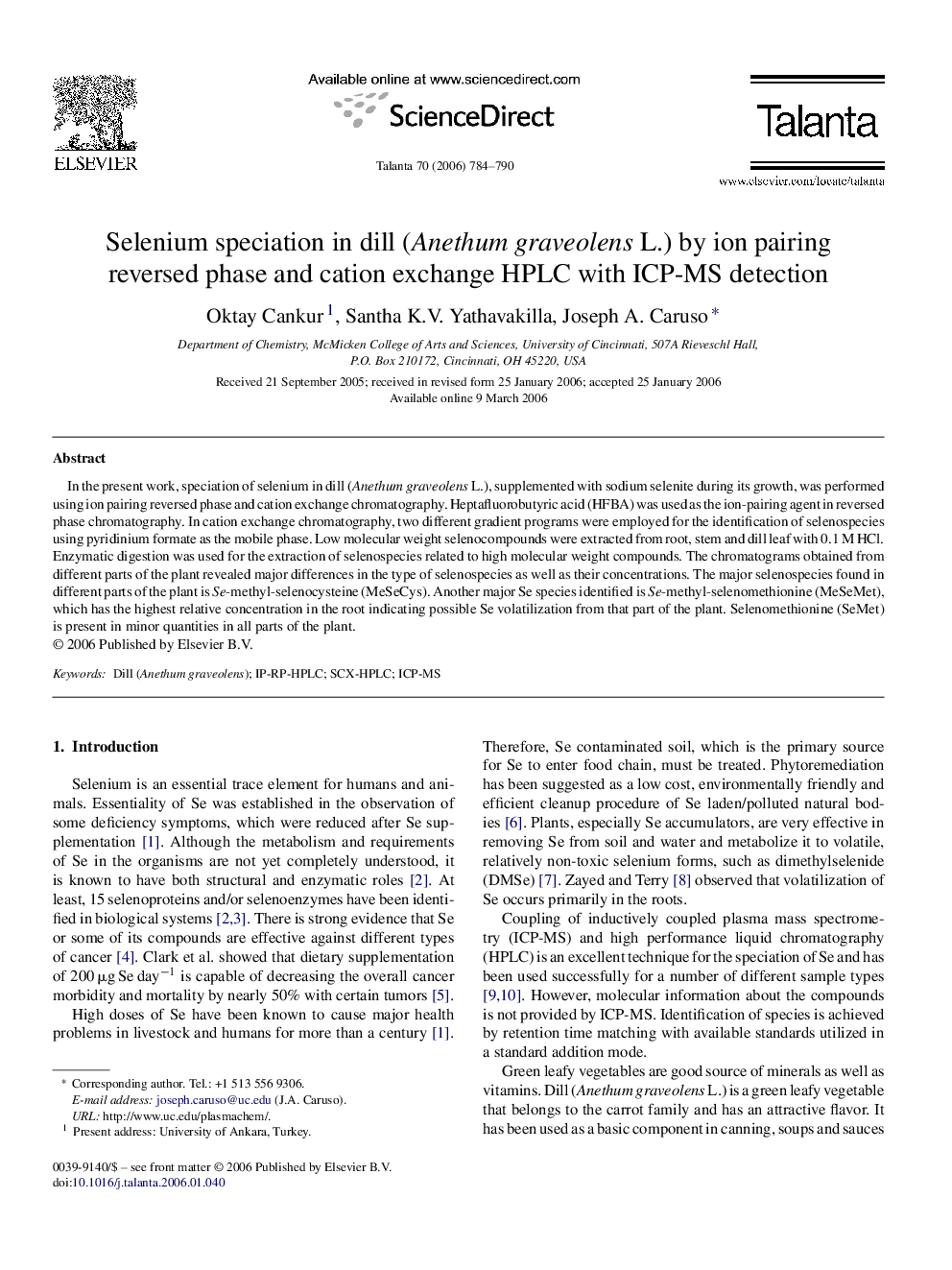| Article ID | Journal | Published Year | Pages | File Type |
|---|---|---|---|---|
| 1246298 | Talanta | 2006 | 7 Pages |
In the present work, speciation of selenium in dill (Anethum graveolens L.), supplemented with sodium selenite during its growth, was performed using ion pairing reversed phase and cation exchange chromatography. Heptafluorobutyric acid (HFBA) was used as the ion-pairing agent in reversed phase chromatography. In cation exchange chromatography, two different gradient programs were employed for the identification of selenospecies using pyridinium formate as the mobile phase. Low molecular weight selenocompounds were extracted from root, stem and dill leaf with 0.1 M HCl. Enzymatic digestion was used for the extraction of selenospecies related to high molecular weight compounds. The chromatograms obtained from different parts of the plant revealed major differences in the type of selenospecies as well as their concentrations. The major selenospecies found in different parts of the plant is Se-methyl-selenocysteine (MeSeCys). Another major Se species identified is Se-methyl-selenomethionine (MeSeMet), which has the highest relative concentration in the root indicating possible Se volatilization from that part of the plant. Selenomethionine (SeMet) is present in minor quantities in all parts of the plant.
